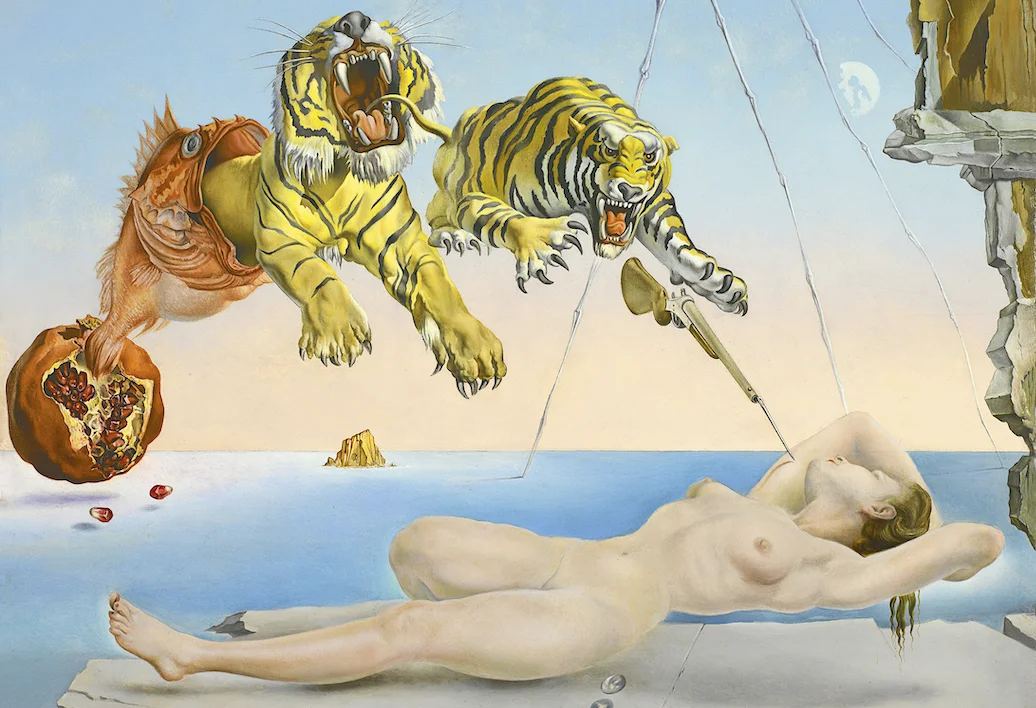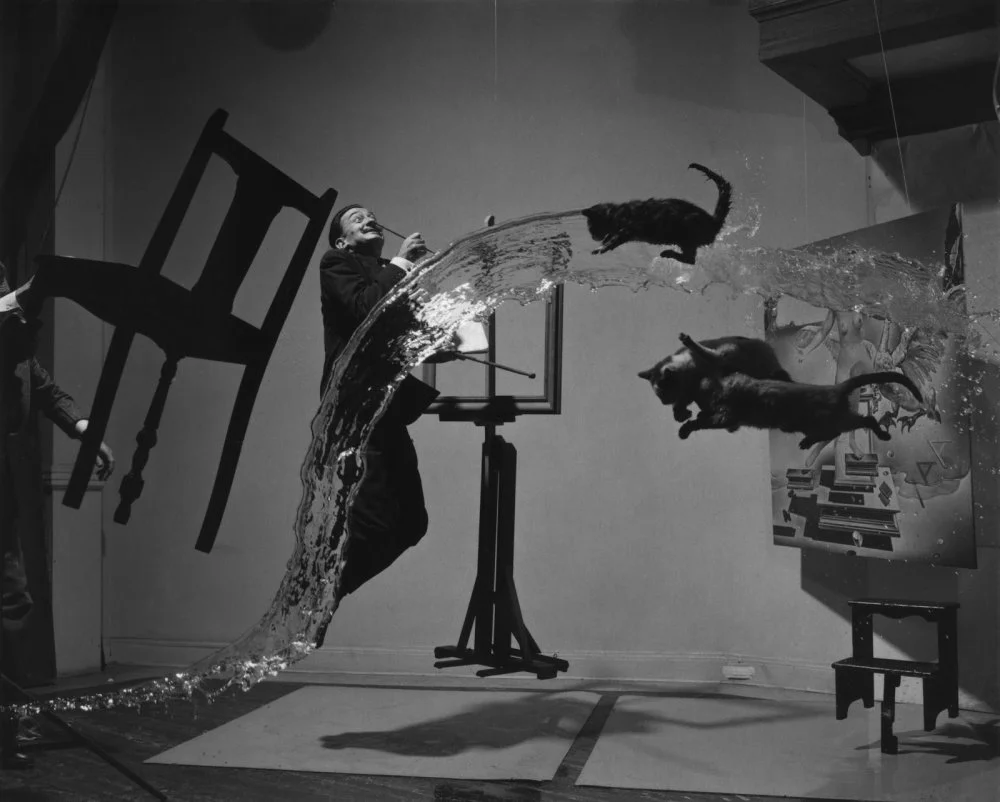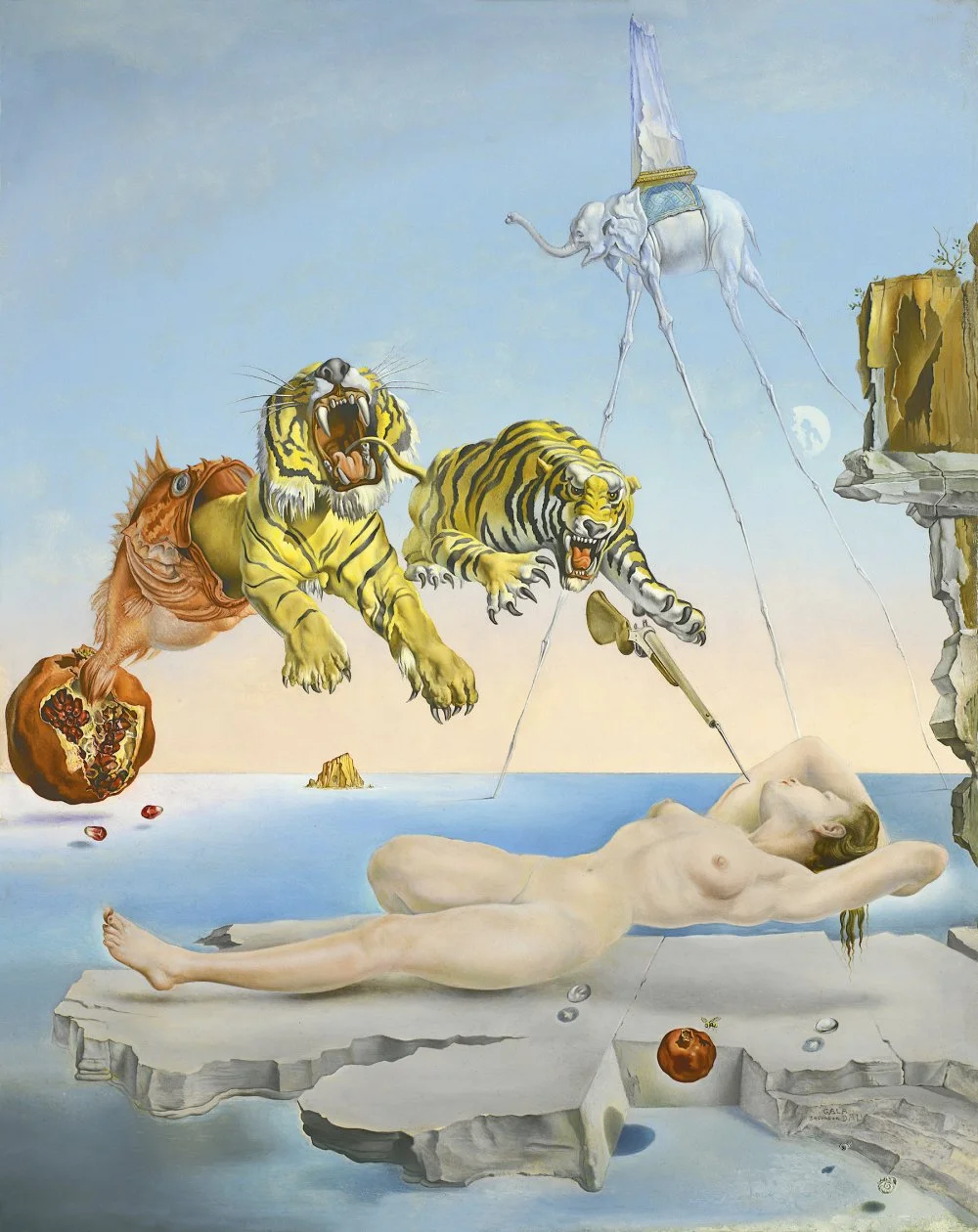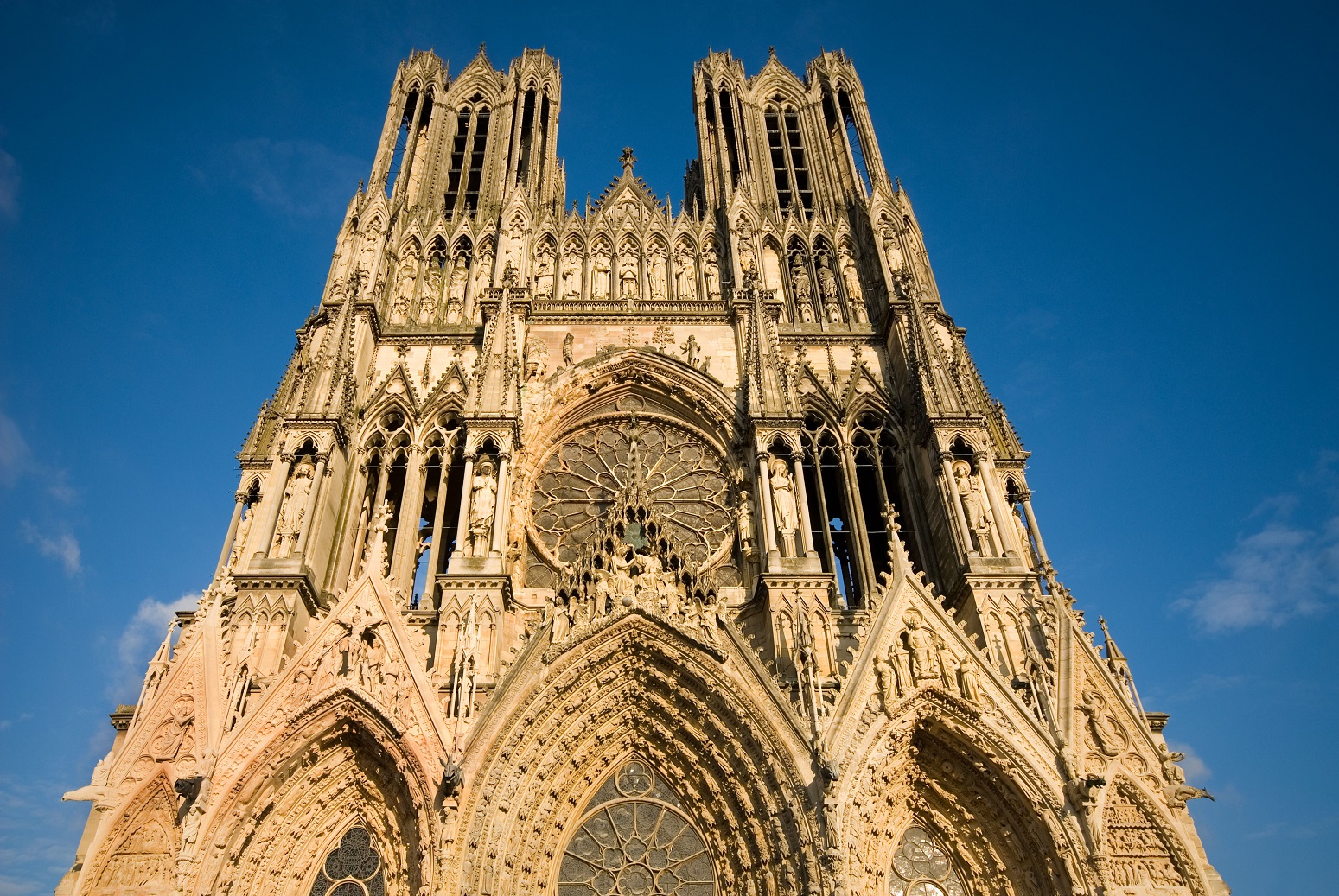Bees, Pomegranates, and the Ocean of the Unconscious
A Surrealist Masterpiece by Dali

Salvador Dali. Dream Caused by the Flight of a Bumblebee around a Pomegranate a Second Before Awakening. 1944/Wikimedia Commons
Dream Caused by the Flight of a Bee around a Pomegranate a Second before Waking (1944)
51x40.5cm. Oil on Panel.
The painting is displayed in the Thyssen-Bornemisza National Museum in Madrid, Spain.
According to some art experts, Salvador Dali had a very limited imagination. This statement may seem ridiculous to someone who is familiar with the amazing art of this titan of surrealism and the genius of unpredictability, however there is some truth in it.
A person with vivid imagination often prefers to hold on to reality treating it as an island of normality and stability in the delirious world of mental images bouncing around in their head. They would have no need to walk the streets of New York with an ant eater (as Dali did), because a truly imaginative person would not be surprised to see an ant-eater on a lead, as they regularly imagine much stranger things. However, the absence of inappropriate ant-eaters on the other end of the lead, on the other hand instils respect...

Philippe Halsman. The 1948 work Dali Atomicus/Wikimedia Commons
It is known that Dali trained himself to fall asleep in an armchair, with keys in his hand and a metal basin on the floor. Once asleep the muscles would relax, and the keys would fall into the basin making a loud noise and the artist, plucked out of the land of dreams would hurry and sketch the dreamy impressions still present in his memory.
This also confirms the idea of somewhat weak imagination as Dali had to go to great lengths and undertake such complicated tasks instead of just slightly closing his eyes and loosening the firm grip on reality.
Another indirect fact that would suggest there is some truth in this speculation is the extreme semantic precision of symbols in Dali’s paintings. No fluctuation, chance or divisiveness, everything is direct, rational, vivid and in your face. For example, in his “Dream Caused by the Flight of a Bee around a Pomegranate a Second before Waking” every image is carefully thought out and in its place.
Dali himself gave the following description of his work: “to express for the first time in images Freud’s discovery of the typical dream with a lengthy narrative, the consequence of the instantaneousness of a chance event which causes the sleeper to wake up. Thus, as a bar might fall on the neck of a sleeping person, causing them to wake up and for a long dream to end with the guillotine blade falling on them, the noise of the bee here provokes the sensation of the sting which will awaken Gala.”
The ”sting” on the painting is aggerated to the size of a bayonet, tiger’s sabre teeth and the spikes of a giant fish – all these tools of the approaching suffering have a clear erotic subtext which is also very Freudian.

Gala and stinger/Wikimedia Commons
In the painting Gala, Dali’s wife Elena Gomberg-Dyakonova, is sleeping surrounded by the ocean of the unconscious (a term in psychoanalysis). Near her, a small pomegranate and a bee are hovering over the water. Both objects are the symbols of the Greek goddess of Death Persephone. Persephone’s bees was the name used for the priestess’ of her cult, and the pomegranate, according to the myth was the fruit, having been eaten, the goddess tied herself forever to the kingdom of her husband, which was the world of the dead. The elephant carrying an obelisk on its back is also connected to Persephone and is a reference to the famous statue by Berninii
Dali very accurately demonstrated the idea that sleep is like little death.
On top of that, Bernini got the image of the elephant with an obelisk on its back from a magical and occult essay dating back to the 15th century, where the main character sees an elephant walking with an obelisk on its back. The essay has a very long name: Poliphilo's Strife of Love in a Dream (Hypnerotomachia Poliphili, ubi humana omnia non nisi somnium esse docet. Atque obiter plurima scitu sane quam digna commemorat.). Usually, this title is shortened to Hypnerotomachia Poliphili .

Pulcino della Minerva, ‘An elephant and obelisk’ by Bernini, Piazza della Minerva, Rome, Lazio, Italy/Alamy
Some experts note that as Bernini’s elephant is one of the symbols of power of the popes (one of which, Alexander VII, commissioned the sculpture), its grotesque image, blocking half the sky, symbolises the pressure of religious control on the true passions of the human soul even in the subconscious. Blue and gold saddle cloth on the elephants also hints at Christianity, as the combination of these two colours is one of its symbols.

The elephant and the obelisk. A fragment of Dali's painting/Wikimedia commons
Therefore, when fantasy is this rational and precise this may raise a question about its authenticity. In the case of Dali, however it doesn’t really matter. His paintings have been feeding the imagination of people for several generations.

Salvador Dali. Dream Caused by the Flight of a Bumblebee around a Pomegranate a Second Before Awakening. 1944/Wikimedia Commons






